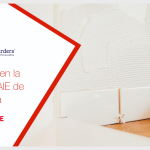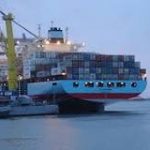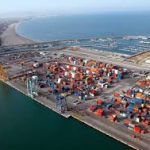The Australian and New Zealand authorities have issued a comunication with guidelines and instructions for dealing with the spread of the brown marmorated stink bug (BMSB). The import commodity must be treated against this insect, otherwise the risk of spread is very high.
It is the responsibility of the exporter to comply with the requirements for treatment and certification of his cargo, as long as this cargo is categorized as high risk.
Categorized high risk goods are: New and used vehicles, machinery, brick tiles, ceramics, steel, stone, wood and cement.
There are also target risk goods, but they must be subject to these restrictions and comply with the relevant requirements: Chemicals, minerals, fertilisers, printed matter, straw, cardboard, paper, plastics and tyres.
There are three treatment options for our goods approved by the Australian and New Zealand authorities:
Heat is the measure for all product types and sizes. 56°C or more will be applied to the coldest surface of the goods for a minimum of 30 minutes.
Another option, for individual goods not exceeding 3000kg shipped in bulk only, is to apply 60°C on the coldest surface of the products for a minimum of 10 minutes. In these cases evidence within the documentation that the goods are less than 3000kg is required for these treatments to be accepted.
On the other hand, Sulfuryl Fluoride is another of the measures that are accepted and could be carried out. In this case a dose of 24 g / m³ or higher, at 10 ° C, for a minimum of 12 hours, not exceeding 24 hours, with a minimum endpoint reading of 12 g / m³. A dose of 24 g/m³ or more may also be applied at 10°C or more for 24 hours or more, with a minimum endpoint reading of 8 g/m³.
Finally there is Methyl Bromide, whose application is the same as that of Sulphuryl Fluoride. A dose of 24 g/m³ or more, at 10°C or more, for a minimum of 12 hours (but not more than 24 hours), with a minimum endpoint reading of 12 g/m³, or a dose of 24 g/m³ or more, at 10°C or more, for 24 hours or more, with a minimum endpoint reading of 8 g/m³.
The list of 33 countries that must meet these requirements because of their high risk is as follows:
Albania Japón
Andorra Kosovo
Armenia Liechtenstein
Austria Luxemburgo
Azerbaiyán Macedonia
Bélgica Montenegro
Bosnia y Herzegovina Países Bajos
Bulgaria Rumania
Canadá Rusia
Croacia Serbia
checo Eslovaquia
Francia Eslovenia
Georgia España
Alemania Suiza
Grecia Italia
Hungría Estados Unidos
The measures will begin to be carried out during the season of risk, from September 1 to April 30, in these links you will find all the necessary documentation and all the measures that must be carried out to treat your cargo correctly:






